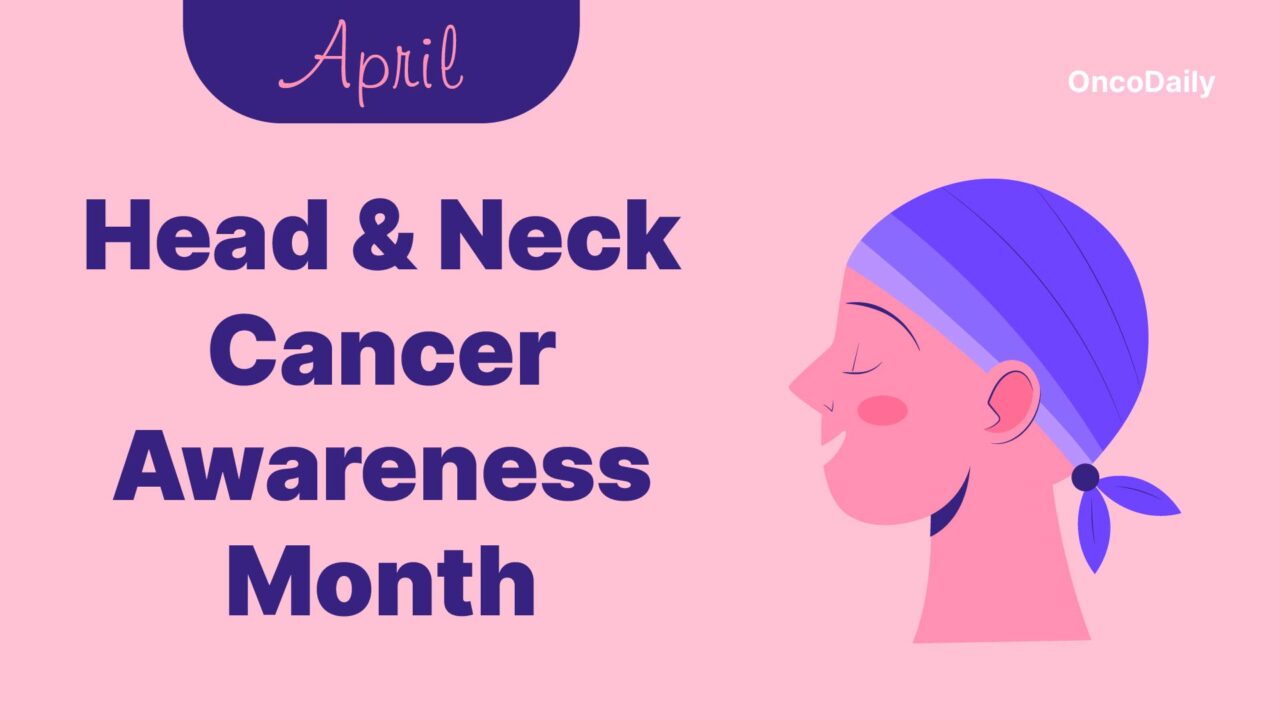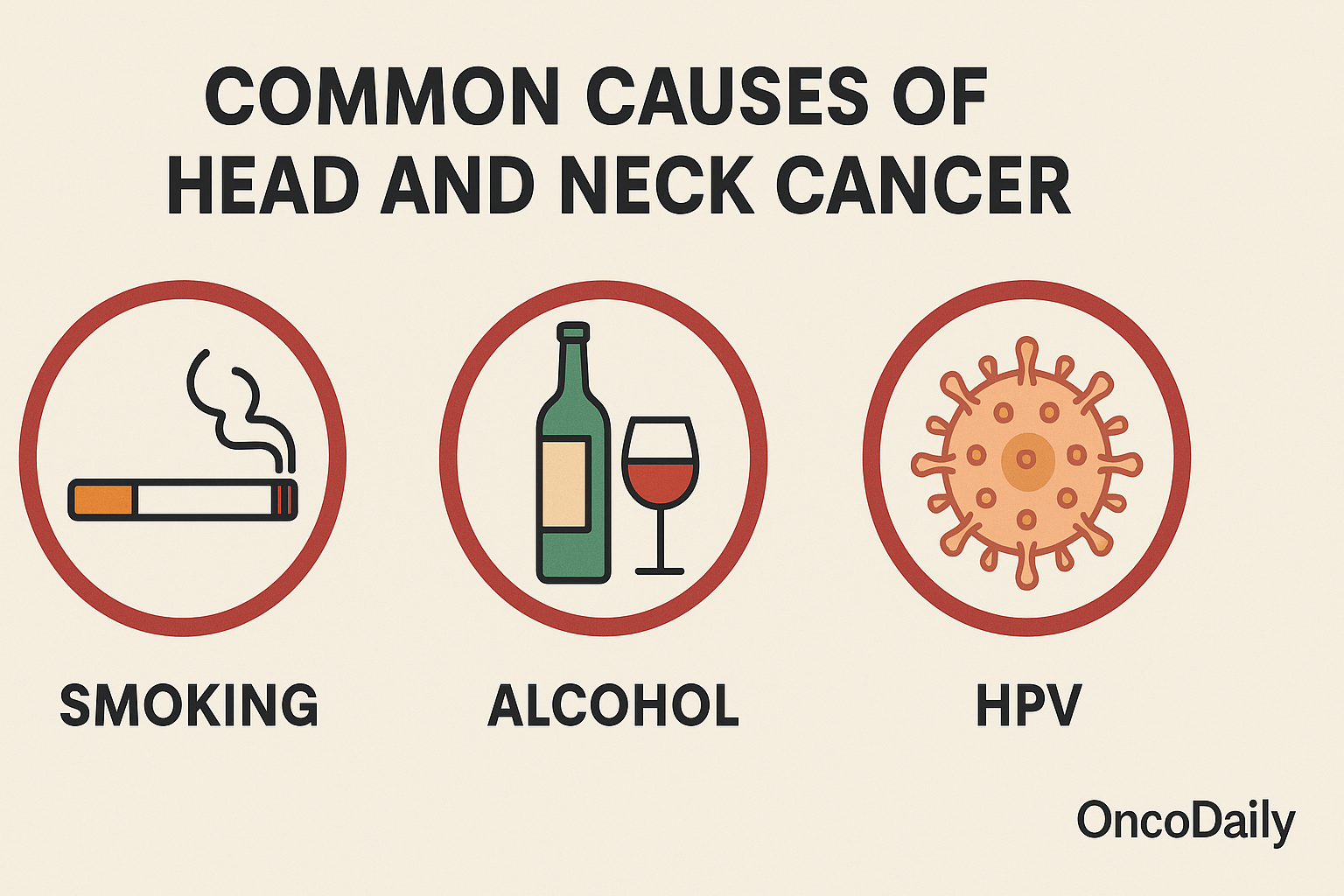
April is Head and Neck Cancer Awareness Month
April is Head and Neck Cancer Awareness Month, an important time to shed light on a group of cancers that often go unnoticed. Increasing awareness is essential to promote early detection, improve outcomes, and support ongoing research efforts.
What is Head and Neck Cancer?
Cancers that are collectively referred to as head and neck cancers usually begin in the squamous cells that line the mucosal surfaces of the head and neck – for example, inside the mouth, throat, and voice box. These are called squamous cell carcinomas of the head and neck.
Less commonly, these cancers can begin in the salivary glands, sinuses, muscles, or nerves in the head and neck region.
They can form in the following areas:
- Oral cavity: lips, front two-thirds of the tongue, gums, lining of the cheeks and lips, floor of the mouth, hard palate, and area behind the wisdom teeth.
- Pharynx (throat): including the nasopharynx (behind the nose), oropharynx (soft palate, tonsils, base of tongue), and hypopharynx (lower throat).
- Larynx (voice box): contains the vocal cords and the epiglottis.
- Paranasal sinuses and nasal cavity
- Salivary glands
You can also read about Stanley Tucci’s fight against throat cancer

Why it Matters
Head and neck cancers account for nearly 4% of all cancers in the United States. They are more than twice as common in men as in women and are most frequently diagnosed in people over the age of 50.
According to the American Cancer Society, in 2025, it is estimated that around 59,660 people in the U.S. will be diagnosed with cancer of the oral cavity, pharynx, or larynx. About 12,770 people are expected to die from these cancers.
Raising Awareness
Spreading accurate information and recognizing early symptoms, such as persistent sore throat, difficulty swallowing, hoarseness, or a lump in the neck, can lead to earlier diagnosis and better outcomes. It’s important to encourage regular check-ups and prompt medical attention when symptoms appear.
During this awareness month, people can show support by wearing burgundy and ivory, the official awareness colors, sharing educational content, and engaging in conversations to help raise public understanding.

What Causes Head and Neck Cancers?
The main risk factors for head and neck cancers are tobacco and alcohol use. Using both increases the risk significantly. Most cancers in the mouth and voice box are linked to these habits.
HPV infection, especially type 16, is a major cause of oropharyngeal cancers, affecting areas like the tonsils and base of the tongue. About 75% of these cancers in the U.S. are caused by HPV.
Other risk factors include:
- Paan (betel quid) use
- Occupational exposure to wood dust, asbestos, or certain chemicals
- Radiation to the head and neck
- Epstein-Barr virus (EBV) infection
- Asian ancestry, particularly Chinese
- Genetic conditions like Fanconi anemia
Avoiding tobacco and alcohol, getting the HPV vaccine, and being aware of symptoms are key steps in prevention and early detection.

What Are the Symptoms of Head and Neck Cancer?
Common symptoms include:
- A lump in the neck
- A sore in the mouth or throat that doesn’t heal
- Persistent sore throat or hoarseness
- Difficulty swallowing
- Voice changes
These signs can also be caused by other conditions, so it’s important to consult a doctor or dentist.
Depending on the area, symptoms may include:
- Oral cavity: Red/white patches, swelling, pain, or bleeding in the mouth
- Throat (pharynx): Pain when swallowing, ear pain, or persistent throat pain
- Voice box (larynx): Difficulty speaking or breathing, ear pain
- Sinuses/Nasal cavity: Blocked sinuses, nosebleeds, headaches, facial swelling
- Salivary glands: Swelling near the jaw, facial numbness, or chronic facial pain
Early detection saves lives—know the signs and seek medical help promptly.
How Are Head and Neck Cancers Diagnosed?
Diagnosis often starts with a physical exam, where a doctor checks the mouth, throat, neck, and nasal areas for lumps or unusual changes.
If something suspicious is found, further tests may include:
- Endoscopy – A thin, lighted tube helps visualize the throat, nasal cavity, or voice box.
- Imaging – X-rays, CT, MRI, or PET scans help locate tumors and check if cancer has spread.
- HPV Test – Checks for the presence of high-risk HPV, a known cause of some head and neck cancers.
- Biopsy – A sample of tissue is taken and tested to confirm if it’s cancer.
Early diagnosis improves treatment outcomes—don’t ignore persistent symptoms.
Head and Neck Cancer Treatment Options
Treatment depends on the cancer’s location, stage, and the patient’s overall health. Surgery is often the first step, involving removal of the tumor and possibly affected lymph nodes, with reconstructive surgery if needed. Radiation therapy, such as IMRT or brachytherapy, targets tumors precisely while minimizing damage to healthy tissue.
Chemotherapy, using drugs like cisplatin or carboplatin, may be given before or after surgery, often combined with radiation for advanced cases. Targeted therapy, like cetuximab, blocks specific cancer growth signals. Immunotherapy helps the immune system fight cancer and is used in some advanced cases. A team of specialists usually works together to ensure the best care.
Raising awareness about head and neck cancer can lead to earlier diagnoses and better outcomes. Knowing the risk factors, recognizing symptoms, and understanding treatment options are key steps. Let’s spread the word, support those affected, and encourage regular checkups—because early action can save lives.
Read also about Lillian Siu, a leading specialist in Head and Neck Cancer treatment and drug development.

-
Challenging the Status Quo in Colorectal Cancer 2024
December 6-8, 2024
-
ESMO 2024 Congress
September 13-17, 2024
-
ASCO Annual Meeting
May 30 - June 4, 2024
-
Yvonne Award 2024
May 31, 2024
-
OncoThon 2024, Online
Feb. 15, 2024
-
Global Summit on War & Cancer 2023, Online
Dec. 14-16, 2023
